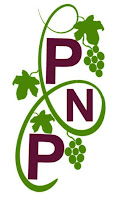BY SUZANNE WILLIAMS
This will not be an article about "how to do" HDR (High Dynamic Range) Photography. I will leave that to the pros. Instead, it is on proper editing technique, and this ultimately affects the outcome of HDR photography.
I have said time and again that I despise HDR photography. In fact, I said it until my mind was completely closed to the topic. If I happened to accidentally click on someone's gallery and then discovered it was full of badly done HDR photographs, I left without even viewing a single photograph. At least, this was until I viewed a series of photographs by National Geographic Magazine. Wow! Amazing! They are HDR done right, and I now see the value behind the technique. They are that spectacular.
This is an obvious example of editing. The original image was in color and I used Photoshop to turn it into a black and white.

Yet ultimately, at the core of creating those images is the very factor of proper editing that I have pushed all along.
A photograph which is properly edited should not look like it was edited at all. This applies to any feature of editing - cropping, sharpening, cloning, or dodge and burn. Editing's strictest purpose is to bring a photograph back to how it would have been seen if you were actually standing there viewing it in person. Proper HDR images have a 3D quality that looks natural yet surreal, but avoid that overly-darkened, vignetted appearance that I so despise.
Bad editing is the bane of a photographers existence (and my biggest pet peeve). You can take the most amazing images, travel miles, spend every dime you have in savings, and then edit your photos to death. There are therefore two qualities to editing that I say everyone must obey - minimalism and honesty.
With this image, I used a combination of filters to increase the color saturation and give it a softer effect.
MINIMALISMSimply put, do as little editing as possible to any image you take. If your horizon is crooked, then by all means straighten it; if some strange tree limb pokes into the bottom corner, then crop the photo and disclude it, but in both cases, do as little as possible.
Crop to the normal ratio of your camera, whether that is 3:2 or 2:1.5 (those are most common). I have used square formats before, but only very rarely. Whenever viewing someone's work and noticing that every image is in some strange shape, it becomes very apparent to me that he or she is relying on cropping to fix everything. The easiest prevention is to pay attention to what is in the foreground and background of your image before you take it. If you are in the habit of randomly snapping without looking at the scene closely, then there lies the essence of your problem. Also, cropping does NOT substitute for the lack of enough zoom and was not meant to be used for that.
But cropping is just one example. Limit your sharpening, any dodging and burning, any other post-editing to only what enhances the photograph, making it look natural. When you do too much (and in my opinion, too much includes over framing an image) you move from photography into digital art. There is a big different in the minds of many photographers, and this brings me to my next quality.
These three pears were photographed on my kitchen counter with black cardboard as a backdrop. I used the "burning" brush in Photoshop to darken certain areas and make them look more suspended in the air.HONESTYNever, never, never (Did I say never?) put your photographs out there and attempt to hide your editing. This is THE most frowned on activity and a good sign of an immature, non-professional photographer. There are many websites, including a lot of photo contests, that have strict guidelines as to what is allowed. And I HAVE seen people lose their award, by being dishonest.
I look at it this way, if I have to edit it to death to save it, it then becomes a documentary shot. I post it as such, and I include the fact I had to edit it considerably. I then move on and hope to some day do that photograph one better and get the picture I really wanted in the first place. Mistakes do happen, after all!
The most common reasons for editing are cropping, sharpening, and white balance correction. Especially in photographs where the main subject is white, minimal white balancing is often needed to remove strange color casts.So in conclusion, what is the purpose of even minor dabbling into HDR photography? It is, as the name suggests, to extend the very limited range of light and color into areas where the camera by itself is just not capable of going. You have to remember that what the human eye can see is so much more than any mechanical device. Done correctly (and please, please view the National Geographic Society's
gallery of HDR images) it is an amazing tool that can achieve some fantastic results.
-------------------------------
 Suzanne Williams Photography
Suzanne Williams PhotographyFlorida, USA
Suzanne Williams is a native Floridian, wife, and mother, with a penchant for spelling anything, who happens to love photography.

































































